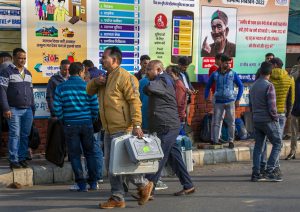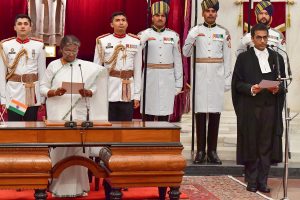On September 28, 2018, the Supreme Court lifted the ban on the entry of women in the Sabarimala temple and made the age-old practice illegal and unconstitutional. While some people welcomed the SC’s decision, this move by the apex court gave rise to further controversies.
Several petitions were filed in the Supreme Court asking the court to review its judgement. In November 2019, a five-judge bench had referred certain questions of this case to a larger bench. Sharad Arvind Bobde, Chief Justice of India, on March 5 had said that the case will be heard by a nine-judge bench in the Supreme Court from March 16. However, the case hasn’t been taken up since due to the nationwide lockdown caused by the coronavirus pandemic.
Why were women barred in Sabarimala temple?
Sabarimala receives over 3-4 crores pilgrims from all religions making it the second largest pilgrim centre in the world, after Mecca. Not all women, but women of menstruating age were banned from entering the famous temple, situated in Western Ghats of Kerala’s Pathanamthitta district.
There are many notions about the restricted entry of women in the temple. One of which says that Lord Ayappa, deity of the temple, is celibate and will remain so till the first-time devotees (kanni swami) stop coming to Sabarimala. According to one legend, Ayappa is celibate so that he can listen to the devotees, a report published in India Today said.
Another notion about the ban of women’s entry in the temple says that a lady-demon, Malikapurathamma was defeated by Ayappa and proposed marriage to him. The temple deity had said that he would marry her when devotees will stop visiting the temple and to honour Malikapurathamma, women of menstruating age don’t visit the temple, an Economic Times report said.
However, there is a third belief about women not entering the temple i.e., Lord Ayappa, born in a royal family in Pathanamthitta, after defeating an Arab intruder namely Babar (Vavar in Malayalam) left all worldly desires including women, the Economic Times report said.
The legal battle on women’s entry
The ban of women’s entry in the temple was first challenged in 1990 in the Kerala High Court. However, the court denied withdrawing the restriction calling the practice a part of an age-old tradition.
In 2006, Indian Young Lawyers’ Association filed a PIL in the Supreme Court challenging the gender discriminatory practice of Sabarimala. The case was referred to a three-judge bench in 2008. The Congress-led government had, then, favoured the status quo.
The plea came up for hearing after eight years and in 2017, a constitution bench was formed. The CPI(M) – led state government had supported the entry of women in the temple. A five-judge constitution bench in September, 2018 lifted the age-old ban with 4:1 majority.




